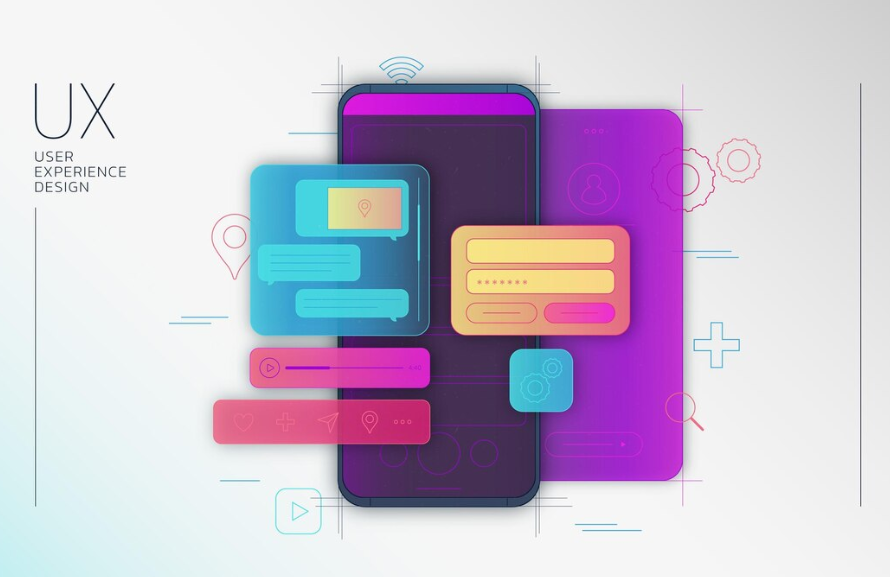Discover the ultimate guide to designing successful mobile applications from scratch. Learn how to deliver outstanding user experiences and top-notch performance with practical tips.
What is Mobile Application Design?
Designing mobile applications is a creative process that involves building custom apps to meet user needs while ensuring a seamless experience on mobile devices. Great design isn’t just about aesthetics—it’s about creating a fully integrated system that offers ease of use, high performance, and valuable functionality.
The Importance of Mobile Application Design
- Enhanced User Experience: Well-designed apps offer unique experiences that keep users coming back.
- Increased Engagement: Exceptional design encourages users to interact with the app for longer periods.
- Boosted Revenue: Attractive, easy-to-use apps motivate users to make purchases or subscribe.
Steps to Designing a Successful Mobile App
1. Analyze Your Target Audience
Understanding your users is the foundation of successful app design. To do this:
- Conduct surveys and interviews to gather insights.
- Identify the pain points your app can solve.
For example, if your target audience is busy professionals, design an app that streamlines complex tasks or saves time.
2. Define Goals and Key Features
Before diving into design, clarify the purpose of your app. Focus on essential features that serve your users, such as:
- Smart Notifications: Timely reminders that enhance user convenience.
- Easy Registration Options: Simplify onboarding with intuitive sign-up forms.
3. Choose the Right Development Platform
Your choice of platform determines your app’s functionality and reach:
- Native Apps: Offer superior performance but are costlier to develop.
- Hybrid Apps: A budget-friendly option for targeting multiple platforms.
For example, businesses targeting high-performance gaming apps often choose native platforms, while content delivery apps might opt for hybrid solutions.
Essential Elements of a Successful Mobile App
1. Engaging User Interface (UI)
An attractive UI builds the first impression. Here’s how to achieve it:
- Use harmonious color schemes that align with your brand.
- Stick to clear, readable fonts for better usability.
2. Smooth User Experience (UX)
UX defines how users interact with your app. To ensure a seamless experience:
- Design intuitive navigation that reduces confusion.
- Optimize loading times to prevent frustration.
3. High-Speed Performance
Performance plays a significant role in user satisfaction. To enhance speed:
- Minimize file sizes for faster downloads.
- Utilize high-quality servers for optimal app operation.
Tools and Tips for Designing Apps
Recommended Design Tools
- Figma: Known for its flexibility and interactive design capabilities.
- Adobe XD: Perfect for creating prototypes that can be tested early.
Tips to Improve Design
- Test your app with a small user group before launch.
- Collect user feedback regularly and apply necessary improvements.
Ensuring App Success Post-Launch
1. Optimize App Store Presence (ASO)
App Store Optimization increases your app’s visibility. Here’s how:
- Use relevant keywords in the app title and description.
- Highlight features with a compelling description to attract downloads.
2. Regular Updates
- Introduce new features to keep users engaged.
- Quickly address bugs or issues reported by users.
3. Effective Marketing Strategies
- Leverage social media to promote your app.
- Collaborate with influencers to reach a broader audience.
Common Mistakes to Avoid
1. Overloading with Features
Adding too many features can overwhelm users. Start simple and expand as needed.
2. Ignoring User Feedback
Failing to listen to users can result in poor retention rates. Always prioritize their input for improvements.
3. Skipping Thorough Testing
Neglecting testing phases can lead to technical issues and user dissatisfaction.
Designing a successful mobile application requires careful planning, attention to detail, and a user-focused approach. By following the steps outlined above, you can create an app that meets user expectations and stands out in the competitive app market.
Frequently Asked Questions
How do I start designing an app?
Begin by identifying your audience and defining your goals. Then choose the right development platform.
Can I design an app on a budget?
Yes, hybrid apps and ready-to-use design platforms can help reduce costs.
What are the most essential tools for app design?
Figma, Adobe XD, and Sketch are popular choices for creating high-quality app designs.
How long does it take to design an app?
The timeline depends on the app’s complexity but typically ranges from 3 to 6 months.
How can I market my app after launch?
Use social media, optimize for app store search (ASO), and collaborate with influencers to maximize reach.





